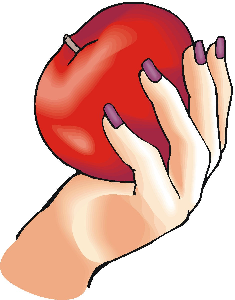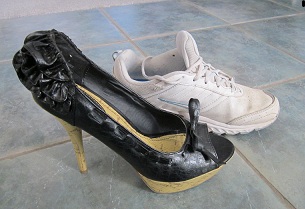 It’s probably already too late if your kids go to a school that does a “Christmas Fair” fundraiser where your kids are expected to sell you gift wrapping paper and bows, and then spend their allowance money on worthless junk that will constitute their presents for parents, grandparents, and siblings. If yours does, I strongly encourage you to join the PTA and turn them in another direction.
It’s probably already too late if your kids go to a school that does a “Christmas Fair” fundraiser where your kids are expected to sell you gift wrapping paper and bows, and then spend their allowance money on worthless junk that will constitute their presents for parents, grandparents, and siblings. If yours does, I strongly encourage you to join the PTA and turn them in another direction.
One of the advantages, if you can call it that, of moving all over with my husband’s Air Force career, was that I got to see a lot of different school districts and how they did things. Because my son has learning difficulties, I always researched schools before we moved, and made sure we only looked for housing in districts with good test scores and good teacher ratios. (If you’re interested in how you do this, drop me a line at the “Ask Abby” tab.) I’ve sampled some pretty good schools, most of which had a lot of parent volunteer involvement. As more and more schools face budget squeezes, they need and expect parents to step up for extras, but that doesn’t have to mean teaching the next generation that buying low-quality (or high-calorie) stuff you don’t want or need is somehow a virtue.
Support Our School by Getting Fat and Living With Clutter
Let me say right here that I totally exempt the Girl Scouts. I spent many hours in my youth selling cookies, most often to people who really, really, wanted them. There was a lady around the corner from me that I always hit on the day the order forms came out, because she was good for at minimum ten boxes of Thin Mints (they freeze well). As long as the door-to-door sales are properly supervised (I never was, but I’m afraid those days are gone), the Scouts have a good system. And most importantly, they have a product people want and look forward to receiving.
I also don’t count Scholastic Book Fairs, because there can never be enough books. No, I’m talking about the endless sales of gift wrap, cookie dough, popcorn, magazine subscriptions, and whatever else sales reps can talk schools into handling. Then at Christmas, there’s the keychains, eyeglasses cases, plastic jewelry and other junk that your kids are supposed to present to loved ones as gifts. And if your kid is in band, or cheer, or sports, they have their own separate fundraisers. Ugh. You have to buy it, and you guiltily pressure friends and relatives to do the same. No one gets anything they want (except the minuscule portion of funds that actually goes to the school), and everybody’s miserable. And we’ve taught our kids a bad lesson.
When we moved into the last school district of my son’s career, something wonderful happened. At the beginning of the school year, with the PTA and orientation packet came a letter. It said, roughly, “Parents have told us that they are tired of being nickeled-and-dimed with fundraisers throughout the year, and the school is tired of watching most of the money going to the companies who organize the sales. If you agree, please write us a check for whatever you think you would have spent on fundraiser sales during the school year, and we won’t bother you again.” It worked like a charm. Parents got peace, they didn’t fill their homes with garbage, and the school got more money than it would have after the organizers took their cut. It might not work in every school, but it sure worked in ours.
I can remember as a child asking my mother what she wanted from me for Christmas, and the answer was either “Nothing” or something task-oriented, like, “Clean your room.” It wasn’t until I was the Mom that I knew how honest she was being.
All I Want For Christmas is For You to Clean Your Room
And what about teaching our kids about giving? There will still be the inevitable ashtrays with hand prints and pipe-cleaner angels for the Christmas tree, but whether you can get your child’s teacher on board with it or not, you can start at home. I can remember as a child asking my mother what she wanted from me for Christmas, and the answer was either “Nothing” or something task-oriented, like, “Clean your room.” It wasn’t until I was the Mom that I knew how honest she was being. Encourage your child to give you a book of coupons redeemable for time or personal services. (If you know your kid is a procrastinator, be sure the coupons are marked “services must be performed within 48 hours of presentation of coupon.”)
There is something age-appropriate for any child old enough to want to give a gift. Younger kids might present coupons like “Pick up all your toys” and “Sing me a song” or “Read me a story.” If you normally read to your kids, and you’ve never asked them to read to you, believe me, you’re missing out on a good time. Older kids can offer to vacuum, mow lawns, rake leaves, or anything else they can do safely with minimal supervision. Give strong hints that you’d like a “clean your room” coupon, or whatever job you normally have to nag to get done. And coupons don’t even have to be specific jobs: “This coupon entitles Mom to two hours of my time to do whatever she asks, without complaints.” What Mom wouldn’t love to get that? It beats the heck out of an “I <heart> Mom” keychain.
For grandparents who don’t live near enough to have their lawns mowed, encourage kids to draw pictures, and write stories about fun times they remember having at Grandma’s house. Better yet, have them make recordings of themselves that Grandma can play over and over again. Free software is available to make digital recordings at home, and they can be emailed to Grandma with no physical player required.
As grown-ups, we understand the connection between working at a job we probably don’t love to get money to buy a present for someone that we hope will make them happy. Kids don’t yet. Unless your kid is like my local budding mogul who has a lemonade stand out rain or shine on every available non-school day, your kids won’t really get it until they get their first paycheck (and they see how fast it goes away). I never had either an allowance or a list of weekly chores growing up, because my Mom believed that you do what you’re asked as a member of the family, and the family provides for you (within reason). But she loved getting a coupon for a foot massage. If you have a teen at that sulky stage, use a “two hours of my time” coupon to go to lunch and talk. Teach your kids that you value their time and company above anything; it just might help them realize how much they value yours.








